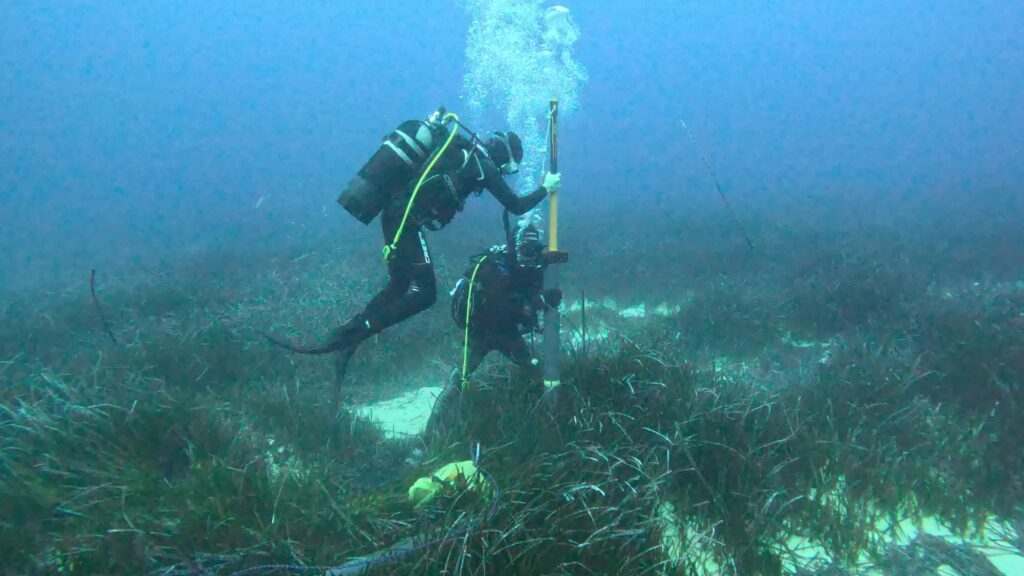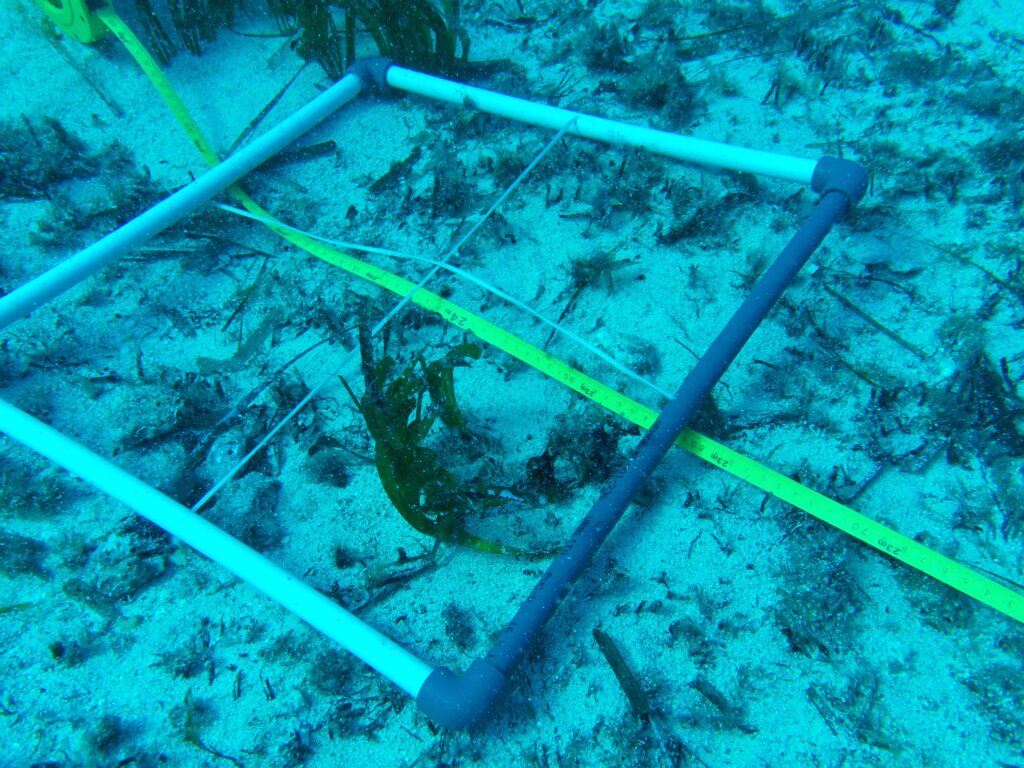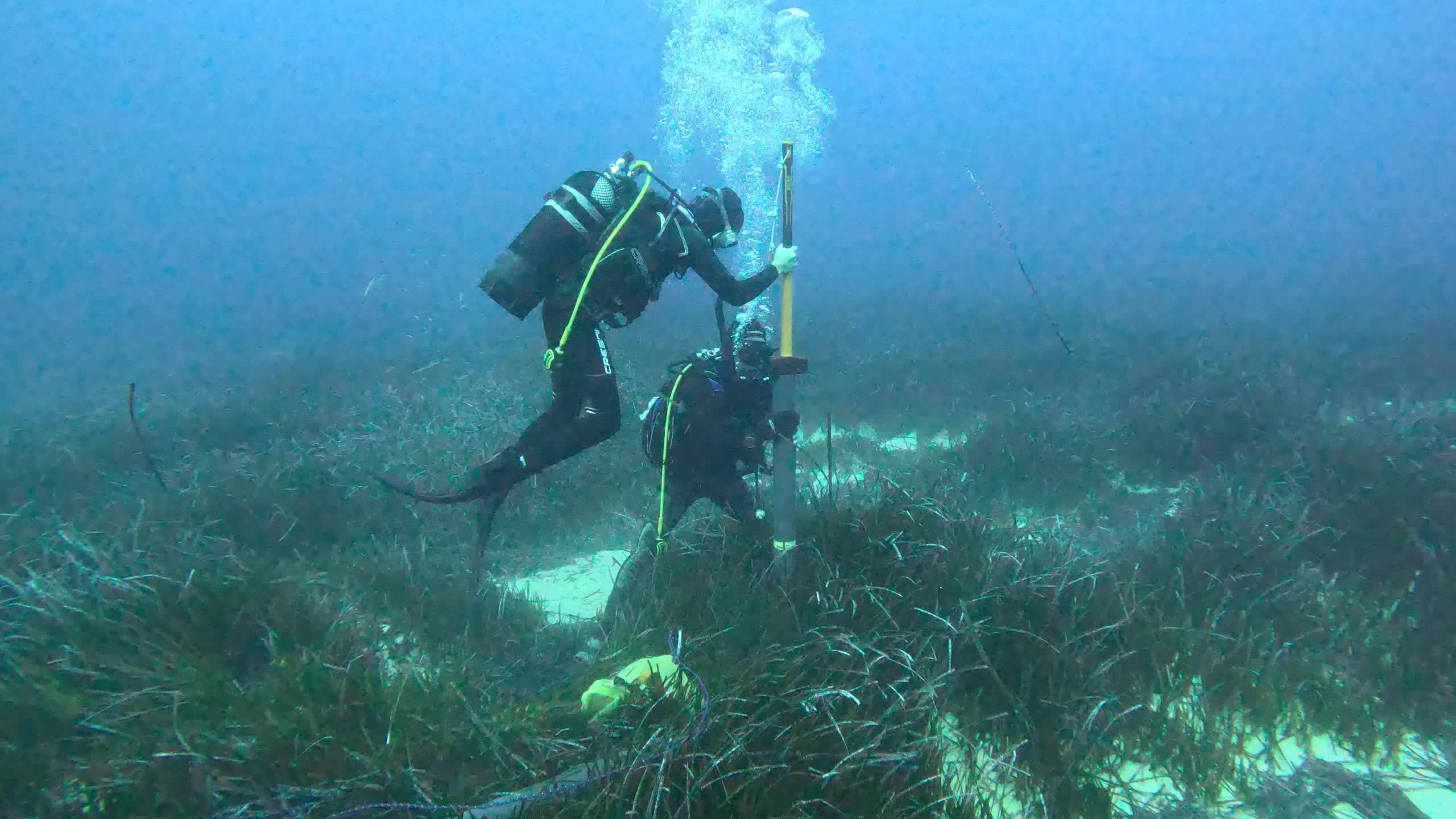After the Atzikiani bay in Crete and the Capo Testa Punta Falcone MPA in Sardinia, the ARTEMIS project has begun its monitoring in Menorca, Balearic Islands, Spain. On the 26th and 27th of November the OBSAM team, led by Irene Estaùn and Eva Marsinyach, collected several samples of the substrate built up by Posidonia oceanica. The subsequent analyses will establish how much carbon (both organic and inorganic) has been stored in what is known as “matte”. The matte of Posidonia oceanica is a dense, layered structure formed by the accumulation of its roots, rhizomes, and organic material over centuries or even millennia. This substrate builds up beneath the seagrass meadows and becomes interwoven with sediment and detritus.

Monitoring has begun in Cala Blanca, Balearic Islands, Spain, for the ARTEMIS Project – Map by Institut Menorquí d’Estudis – OBSAM
The coring has been performed with the support of CEAB (Centre d’Estudis Avançats de Blanes) and in particular by the researchers Oscar Serrano and Nicole Foster. The Menorca’s pilot site is located in the western coast of the island, in front of Cala Blanca area. This is located within a large Nature 2000 Site called “Canal de Menorca“. The sampling was done just in the pilot site of ARTEMIS project, and also in the “control area” which is located around the pilot site.

Researchers from CEAB, Centre d’Estudis Avançats, sample the seagrass substrate for monitoring for the ARTEMIS project – Institut Menorquí d’Estudis – OBSAM

Posidonia oceanica seagrass monitoring activities in Cala Blanca, Spain – Institut Menorquí d’Estudis – OBSAM
In 2010 the Cala Blanca marine ecosystem was affected by the malfunctioning of a desalinization plant that has littered the seabed with bentonite, heavily damaging the Posidonia meadows.
“One of the specificities of the spot is that it’s located 20 meters depth. Collecting the samples has been a challenging task. Right now we’re preparing all the samples for the laboratory”, says Irene Estaùn, OMBSAM’s environmental technician. Soon the Menorca’s team will be working on the EBQI index, which is necessary to assess the biodiversity status of the site.


